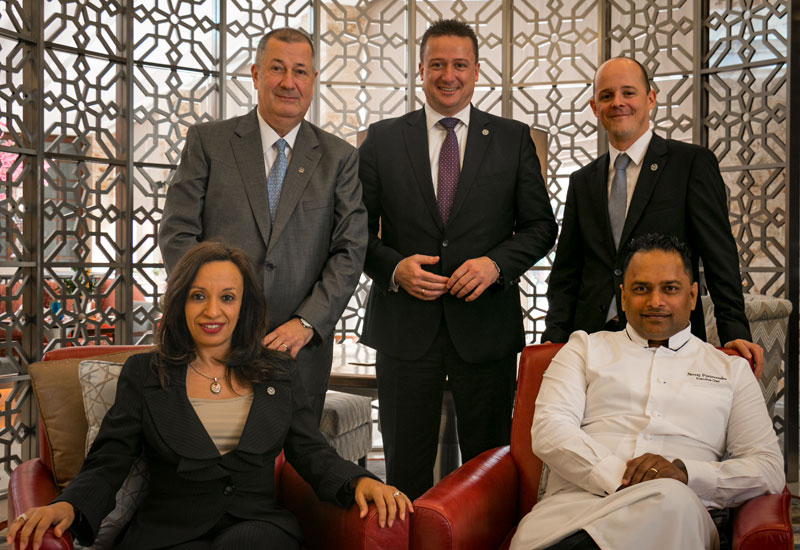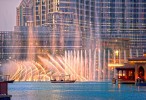 From L-R standing: Thomas Van Opstal, Marcus Ptok and director of marketing Jeremie Lannoy. Sitting (from L-R) Mai Nassar and Neeraj Pyaneeandee.
From L-R standing: Thomas Van Opstal, Marcus Ptok and director of marketing Jeremie Lannoy. Sitting (from L-R) Mai Nassar and Neeraj Pyaneeandee.
The Sheraton Oman Hotel shut down for renovation for a decade, and re-opened in late 2016. At the outset the hotel management made it clear it was unwilling to get into the nitty gritty details of the delays surrounding the refurbishment. Its general manager, Thomas Van Opstal, a Sheraton veteran with over three decades of experience, describes the pre-opening stage as anything but routine.
Making our way to the executive lounge, which is located on the sub-ground floor level, Opstal says: “This was a particularly different opening. In fact it was a re-opening because the hotel existed; it was closed for many years and then we had to reopen it. There were obviously some issues that you wouldn’t find in a normal opening of a hotel. We had some OS&E and FF&E at the hotel, for example.”
The Sheraton Oman is a landmark of sorts in Muscat, a city that does not pride itself on high rises like its neighbouring Gulf cities. This makes the 14-storey hotel the tallest tower in the capital city of the Sultanate, which put it firmly in public sight and begged questions as to why the hotel was closed for so long. Opstal is unwilling to dwell on the past and instead wants to look to the future.
He does, however, give an insight into the owner and operator relationship during the last decade. “There was of course a very good relationship, otherwise the owners or Starwood would have walked away. There was never any question of whether it would not be done. Starwood could have had other hotels here if they wanted to, but the Sheraton Oman has a lot of history and heritage. We kept the dialogue going with the owners and, definitely, it was always going to happen,” he says.
The Sheraton Oman Hotel is described by a few members of its staff as a new hotel within an old one.
Opstal explains: “The fundamentals of the hotel were existing, we did not change the tower or anything. We made some alterations to the podium level, where we built another ballroom and other restaurants. The difficulty here, more than anywhere else, was some of the equipment in the hotel existed partially and the rest had to be replaced. There was a bit of back and forth; some mixing and matching of the old with the new.
“Everything you see is new — but the tower block is old, and the size and makeup of the guest rooms have not been changed. Then the basement, the heart of the house [remained the same]. We did not relocate the kitchens either. However, everything inside the rooms has changed, the fit-out, lobby, public areas and F&B outlets. Essentially everything apart from the outer shell has changed.”
Opstal arrived at the property one-and-half-years before it opened and felt there was a positive energy surrounding the property in the market. “Everyone was eager for the property to re-open. Over the years we were lucky that Muscat did not have a massive supply of hotels, and the Sheraton Oman had always maintained its presence being the tallest building in Muscat.
“The hotel is still very much in the heart of the local population. Expatriates come and go but for the local population the Sheraton Oman always remained,” he comments.
Opstal ended up facing all the questions, such as: ‘When are you going to re-open? Are you going to bring the seafood nights back?’
“People have memories and it’s always a bit of fun [to play on the history and memories],” he teases.
Director of sales Mai Nassar shares similar sentiments. She says: “Many of the stakeholders (travel agents, partners and DMCs), did not even believe we were opening this time.
“People were excited because they either had a strong connection with the property and they started asking if we still had a few specifics in mind for the hotel — like the seafood night.”

| Advertisement |








 Search our database of more than 2,700 industry companies
Search our database of more than 2,700 industry companies









